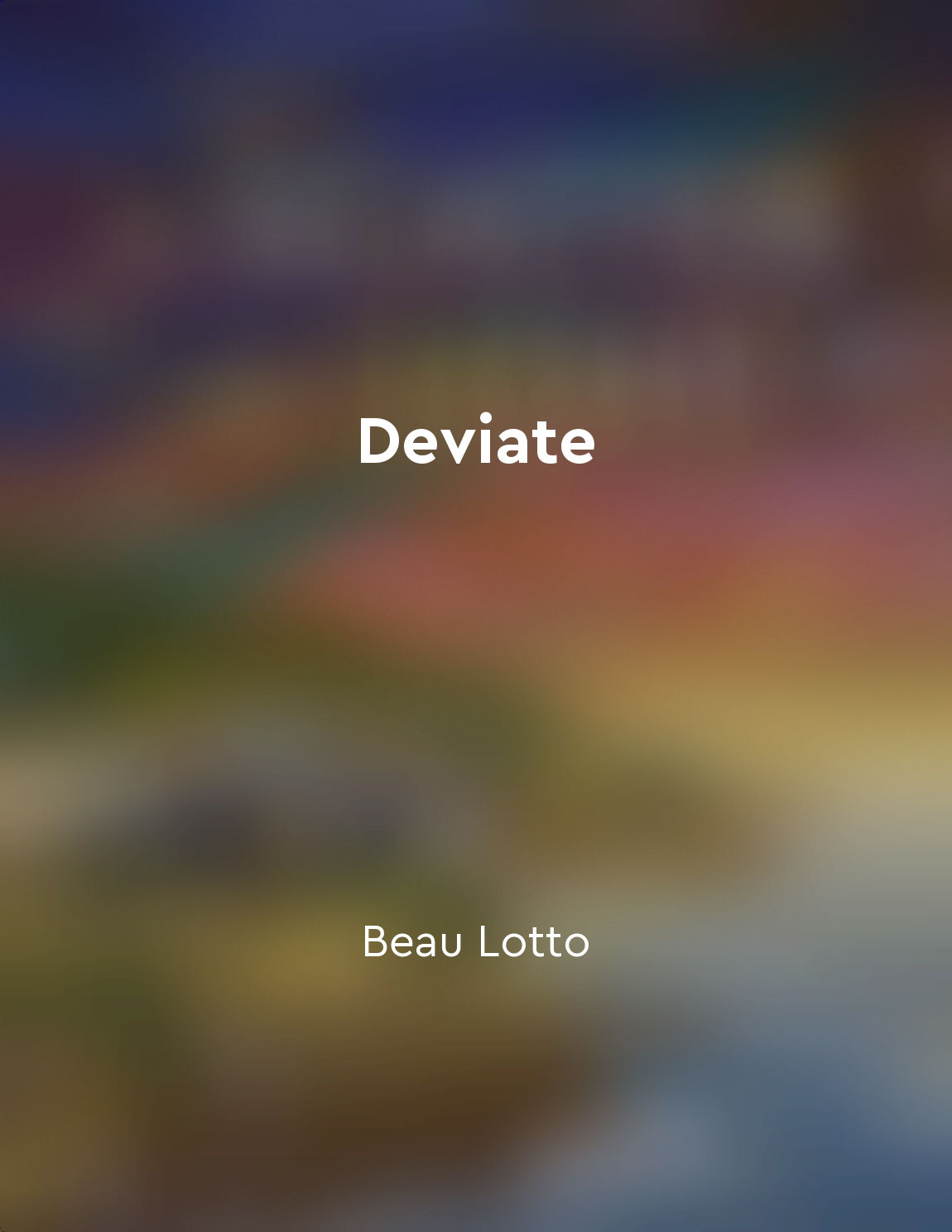Different regions of the brain are responsible for different sensory experiences from "summary" of Phantoms in the Brain by V. S. Ramachandran
In our remarkable brain, each sensory modality – sight, sound, touch, taste, and smell – is processed in a specific region. These regions are interconnected and communicate with each other, creating a rich tapestry of sensory experiences. When one of these regions is damaged or disrupted, it can lead to fascinating phenomena, such as synesthesia or phantom limbs. For example, when the visual cortex is stimulated through electrical signals, a blind person may see flashes of light. This demonstrates the plasticity of the brain, as it can adapt and repurpose regions for different functions when necessary. Similarly, when the somatosensory cortex is deprived of input due to an amputation, it can create a phantom limb sensation, where the person feels as though the missing limb is still present. Furthermore, the brain's ability to integrate information from different sensory modalities is crucial for our perception of the world. For instance, when we see an object, our brain combines visual information with tactile sensations to create a coherent understanding of the object's properties. This process is so seamless and automatic that we often take it for granted. Moreover, the brain's specialization for different sensory experiences extends to higher cognitive functions such as language. Language processing involves multiple regions working together in a coordinated manner. Damage to specific language areas can result in aphasia, where a person struggles to comprehend or produce speech.- The organization of the brain into specialized regions for different sensory experiences is a testament to its complexity and versatility. By studying these phenomena, we can gain insights into how the brain functions and adapts to various challenges.
Similar Posts
Sensory integration is key to better learning
The brain is a complex organ that is constantly processing information from our environment through our senses. This sensory in...

Perspective shapes our reality
The way we see the world isn't just a reflection of the world. It's more than that. Our perspective doesn't just mirror reality...
Nature and nurture interact to shape behavior
The interplay between genetics and environment plays a crucial role in shaping human behavior. While genetics lay down the blue...
Coloring can stimulate creativity and problemsolving skills
Coloring has long been recognized as an activity that can unleash creativity and problem-solving skills. When we pick up a colo...
Our instincts can guide us towards ethical decisions
In the complex landscape of human morality, our instincts can serve as a moral compass, guiding us toward ethical decisions. Th...

Emotions can influence cognitive processes
In our complex brains, emotions and cognitive processes are deeply intertwined. When we experience emotions, such as happiness,...
Quantum mechanics and relativity guide scientific inquiry
Quantum mechanics and relativity have been instrumental in shaping the course of scientific inquiry. These two well-established...
People with vision loss develop compensatory skills
One of the remarkable phenomena observed in individuals with vision loss is the development of compensatory skills. These indiv...

Synesthesia is a blending of sensory experiences
In the strange world of synesthesia, the senses become intertwined, blurring the lines between what we see, hear, taste, touch,...

Patients with neurological disorders often exhibit astonishing abilities
The human brain is a complex and mysterious organ, capable of both incredible feats and perplexing abnormalities. In the field ...

